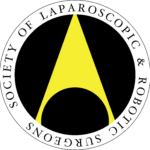Preface & Acknowledgements
PREFACE AND ACKNOWLEDGMENTS
The advancement of Minimally Invasive Surgery (MIS) over the past two decades has been phenomenal. As a major medical breakthrough of the past 30 years, MIS has burst into this early part of a new century with a bang and fired up surgeons from multiple specialties around the world to master new approaches to these patient-centric techniques.
Surgeons have continually learned to treat their patients in a safer, less invasive way as improvement of outcomes has continued and has been an ongoing challenge during the past 30 years.
Prevention and Management of Laparoendoscopic Surgical Complications (PM1), which started as a thin 250 page volume with Three Editors, 41 authors and 31 chapters in 1999, grew to 500 pages, Six Editors, 100 authors and 57 chapters in the Second Edition by 2005.
The PM textbooks were a sellout in the US, China and Brazil, with translations into Chinese and Portuguese. In addition, the Second Edition PM2 added Spanish translations.
A significant milestone was the publication of a FREE, ONLINE, SEARCHABLE Textbook, PM1Online, also in 2005. It was the first of its kind, an OPEN ACCESS ONLINE MEDICAL TEXTBOOK. This was an important milestone as a new type of surgical educational text and also included online electronic translation to the original three languages plus Spanish.
The integration of the online textbook to OPEN ACCESS learning for surgeons in multiple specialties linked to SLS’s family of online resources has been a perfect blending of knowledge and information for Surgeons, Gynecologists, EndoUrologists and many others. It has quickly become the most referred to source of learning for MIS Surgeons in multiple specialties worldwide and has ushered in a new era for how we learn and keep up with post-graduate education for physicians.
This all-new Third Edition, PM3 2012, not only keeps up with the frenetic pace of postgraduate learning and information for Surgeons, Gynecologists, EndoUrologists, and others, but also advances understanding in how we learn and the use of Web-based technologies. Features such as electronic translation to Twenty-Three Languages, Free, Open Access, portability to every electronic device around the world available as of this writing (no small number), Embedded Videos, social networking, complete web searchability and local searchability contribute to making this edition more complete and accessible than ever.
PM3 2012 has expanded to Seventy-Two Chapters by One-Hundred And Thirty Distinguished Authors plus three forewords from luminaries in Gynecology (Victor Gomel), General Surgery (Sir Alfred Cuschieri) and EndoUrology (Elspeth McDougall); three specialties which are closely related in similarity of techniques and treatments and which share an important need to understand how each other approaches MIS. Top veteran Editors of this volume include Michael S. Kavic and William E. Kelley for General Surgery, Camran Nezhat and Liselotte Mettler for Gynecology and Howard Winfield for EndoUrology. These superb Editors are to be congratulated, as they have guided their sections and worked together in an amazingly coordinated effort to bring the level of all work to new heights. The professional publishing staff at SLS who have worked on this volume have succeeded again in fine-tuning and polishing this presentation, they are Gisele Muller, Ann Conti Morcos, Isabel Kilzi Rovira, Lauren Frede and Tricia Ramsey. A very special thank you to Janis Chinnock Wetter, an inspiration and the right side of my brain in all things SLS and so much more.
PM3 2012 is also unique and represents another first in the trend of modern medical education. PM3 is being first published on the Web, with a print version to follow with books printed on demand as needed worldwide. This new trend is a major breakthrough for all involved, especially the physician practitioner. The practitioners get the information they need when, and where, and how they need it as PM3 will remain always available online and never out of print.
Lastly, but most importantly, the overall amount of useful information by authorities in these volumes is staggering and a tribute to the top-level authors, editors, and contributors in these chapters.
On behalf of all the members of SLS and all our colleague medical education societies around the world I congratulate those hundreds who contributed their valuable time and effort for this amazing publication.
It has been my esteemed honor to lead this distinguished group of scientist virtuosi.
Paul Alan Wetter, MD

